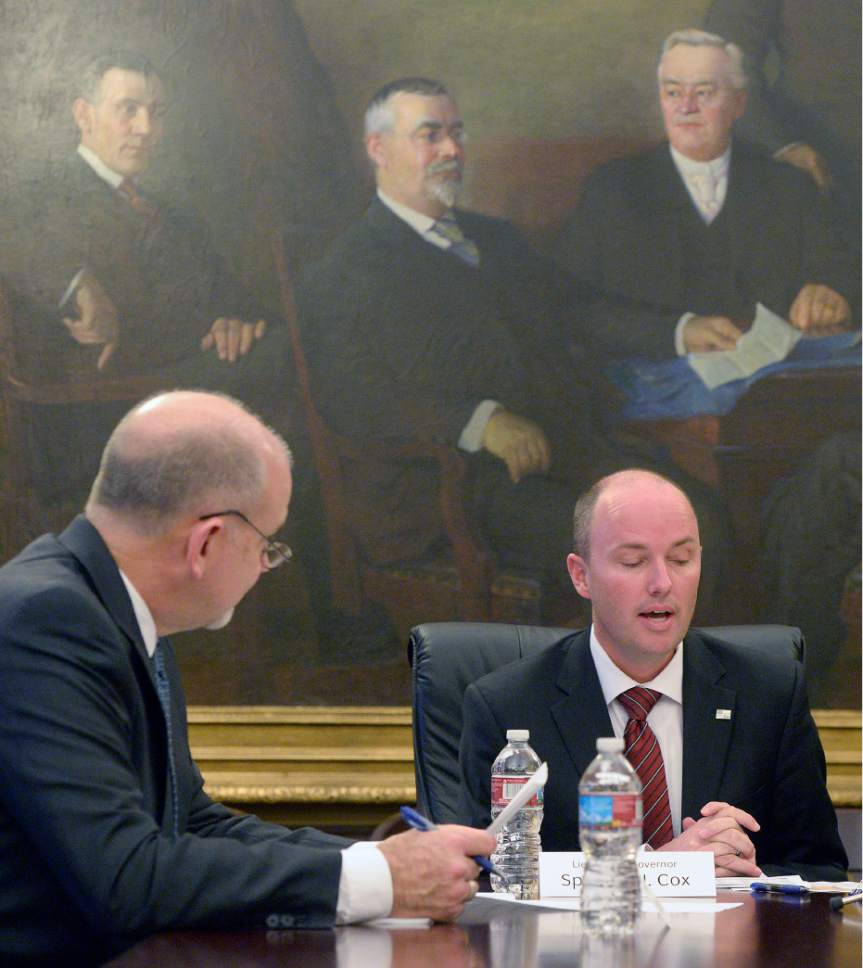This is an archived article that was published on sltrib.com in 2016, and information in the article may be outdated. It is provided only for personal research purposes and may not be reprinted.
This wild election year prompted more Utahns to vote than ever. And the percentage of residents who cast ballots was either the highest in two or four decades, depending on who does the math.
After the final state vote canvass Monday, Lt. Gov. Spencer Cox reported that 1,152,369 Utahns cast ballots this year, a record for the growing state.
Cox, Utah's top election official, said that was 82 percent of the state's "active registered voters," defined as anyone who has voted or registered during the past eight years.
Mark Thomas, state elections director, said that was the highest turnout since 1964, when it was 89 percent.
This year's turnout was up a couple of percentage points from the 80.15 percent of 2012, when adopted favorite-son Mitt Romney was the GOP presidential nominee. That, in turn, was much higher than the 67.8 percent of the 2008 presidential election.
But Utah's turnout looks less impressive when it is figured as a percentage of the "voting eligible population," or anyone who is old enough to vote and is legally eligible. Only 57.8 percent of such Utahns cast ballots this year — meaning more than four of 10 did not bother to register.
Utah's turnout was a bit lower than the national average of 58.5 percent this year, according to the United States Elections Project at the University of Florida. According to its data, Utah currently would rank No. 37 nationally for turnout among the states, but those rankings are still being updated as more states finish their canvasses.
Still, that turnout for the voting-eligible population is Utah's highest since 1992, and the third straight presidential election in which turnout has improved.
"It's positive we're moving in the right direction," Cox said. "We still have work to do. ... We want to find ways to get more people registered, to get them informed and give them an opportunity to participate in governing."
Cox credited this year's higher turnout to two main factors: presidential candidates paying more attention to the state and greater use of by-mail voting.
"It probably helps when the state becomes somewhat of a swing state," Cox said, because polls at one point had shown a dead heat among Republican Donald Trump, Democrat Hillary Clinton and independent Evan McMullin.
"We had a lot more attention than we normally would during a presidential election, and clearly that helped to drive turnout," he said.
The final official count Monday showed that Trump took Utah with 45.5 percent of the vote, trailed by Clinton with 27.5 percent and McMullin with 21.5 percent.
Cox noted that 21 of Utah's 29 counties voted by mail this year. Every one of the by-mail counties achieved higher voter turnout than the eight counties that used only traditional in-person voting on Election Day.
Three counties had turnout greater than 90 percent of active registered voters: Kane, 92.7 percent; Grand, 91.3 percent; and Sevier, 90.2 percent.
Another 16 counties had turnout greater than 80 percent, including the large counties of Davis, 88.2 percent; Weber, 85.7 percent; and Salt Lake, 83.7 percent.
The eight counties that did not vote by mail all had turnout of lower than 79 percent, including large Utah County at 74.4 percent.
Besides boosting turnout, Cox said by-mail voting also appeared to improve voter education "because they actually have the ballot, and they have the opportunity to research what is on the ballot — instead of just getting in the ballot booth and finding out there are three constitutional amendments they had never heard of."
Cox noted that the Legislature ordered his office to study by-mail voting, including whether it should continue or how it should be improved.
"I suspect that it will stick around" because of the higher turnout, Cox said. "Obviously, there are some things we can do better, and we can learn from this election and make necessary changes going forward."
He said that includes adding more polling places on Election Day in by-mail counties. Officials underestimated how many people would want to vote in person, and that led to lines of up to four hours in some locations.
Also, Cox said, allowing Election Day registration slowed many of the lines in by-mail counties, and ways must be found to streamline that if it continues.
A few recounts are still expected, but Thomas said they will be conducted by county clerks. Recounts are expected for a three-vote win by state Rep. LaVar Christensen, R-Draper, over Democrat Suzanne Harrison, and a two-vote difference between candidates in the new Emigration Canyon Metro Township Council for the final seat there. Official results showed Kathryn Christensen narrowly leading Steve Hook.







